8 February 2015. Quetzal Trail near Boquete, Chiriqui, Panama.The hike of a week ago, the one on which I caught glimpses of the Resplendent Quetzals, left me determined to return and take more time to explore that particular valley trail; to take all day if necessary. This was my chance.
Many hike this trail search of quetzals, it’s a very rugged path and climbs steadily towards the quetzal habitat, which is in deep forest about two kilometres from the start. As I observed a couple of entries earlier, I really doubt that anyone without an experienced guide would see a quetzal, but all sorts of hopeful and unaccompanied folks make the attempt anyway.
The trail starts where the valley opens out among fields which are cultivated after a fashion, it is flanked by towering forested mountainsides and follows the course of a fast running mountain torrent which defines the quetzal valley; the trail never wanders far from it or one of its tumbling tributaries. The apparently clean and perhaps drinkable waters sparkle as they gush and careen unstoppable through rocky clefts and interlocked tangles of straggling greenery.
I took my time trekking slowly uphill, sometimes explaining to passing groups of quetzal-questers what I was looking at, not that I was seeing all that much; and certainly not a quetzal. None of them was in the slightest bit interested in a Long-tailed Silky Flycatcher that I spent time staring at. It was on the top of a bare and scrawny tree, but against the bright sky it was almost impossible to make out any of its colour, a pity because I know from illustrations that they are plumaged in a rather beautiful combination of greys and yellows. It was only by its silhouette, especially that of its crest and graduated tail, that I was able to indentify it.
The warm and lush forests naturally teem with insects; protein to many, and where there is protein there is always something ready to eat it. Apart from the Silky-flycatcher, my notes from Boquete include several other members of the large and variously adapted Tyrannidae or Tyrant Flycatcher family: Tropical Kingbird, Greater Kiskadee, Yellowish Flycatcher, Dark Peewee, Black Phoebe, Torrent Tyrannulet and Tufted Flycatcher included. There were a few others that I was sure were part of the family but was unable to identify for one reason or another. And of course there were many more eaters-of-flies such as swallows and martins, which are not part of the Flycatcher family and probably don’t care whether they are or not.
I continued on past the quetzal zone, climbing ever onwards and marvelling at how unthreatening this impenetrable jungle seemed; admittedly I was on a well used path but still…. This is the sort of country that should, I would have thought, have placed me in imminent danger at every turn. Where were the venomous snakes: Eyelash Vipers and Bushmasters? Why no clouds of malarial mosquitoes? And what about armies of looping leeches or flesh-stripping ants? There was none of it. It was as pleasant as a June stroll along one of our tranquil lakeshore trails; albeit a good bit bumpier.
I eventually reached the end of the path at the plunge pool where the river arrived from several hundred giddy feet above. I scrambled to a well-placed rock and enjoyed my picnic lunch, it was the sort of cool, green place that could have used a Victorian poet to do it justice.
Well, along the way this day I found a few birds of interest; quite enough to satisfy me. If you were an avid lister it might not cut it, for while the tropics, Central America in particular, may be rich in bird life it takes luck, effort and an absence of leaves to find them; a skilled local bird guide is the best answer.
I caught fleeting looks at a Ruddy-capped Nightingale Thrush, a nervously evasive member of the Catharus family of thrushes, some members of which spend spring and summer in Ontario. They are all rather slender and gentle-looking birds, subtly clad in buff and soft browns (see my earlier posting about a Hermit Thrush). The Ruddy-capped Nightingale Thrush has a glowing warm cinnamon-brown cap and back. Interestingly (to me anyway) I may have heard several of these birds singing on this and other days. I was, and remain, a little puzzled by the songs of what I thought were Wood Thrushes coming from within the thick forests. But the song wasn’t exactly right and surely, I reasoned, Wood Thrushes wouldn’t be singing unless they’re on their northern breeding grounds. Song, after all, is about establishing, defining and maintaining breeding territory. But still, I was hearing something very much like a Wood Thrush and some research on Xeno-canto (perhaps the ultimate repository of bird vocalizations) leads me to think that I was indeed hearing the songs of Ruddy-capped Nightingale Thrushes; although I’ll probably never know for sure.
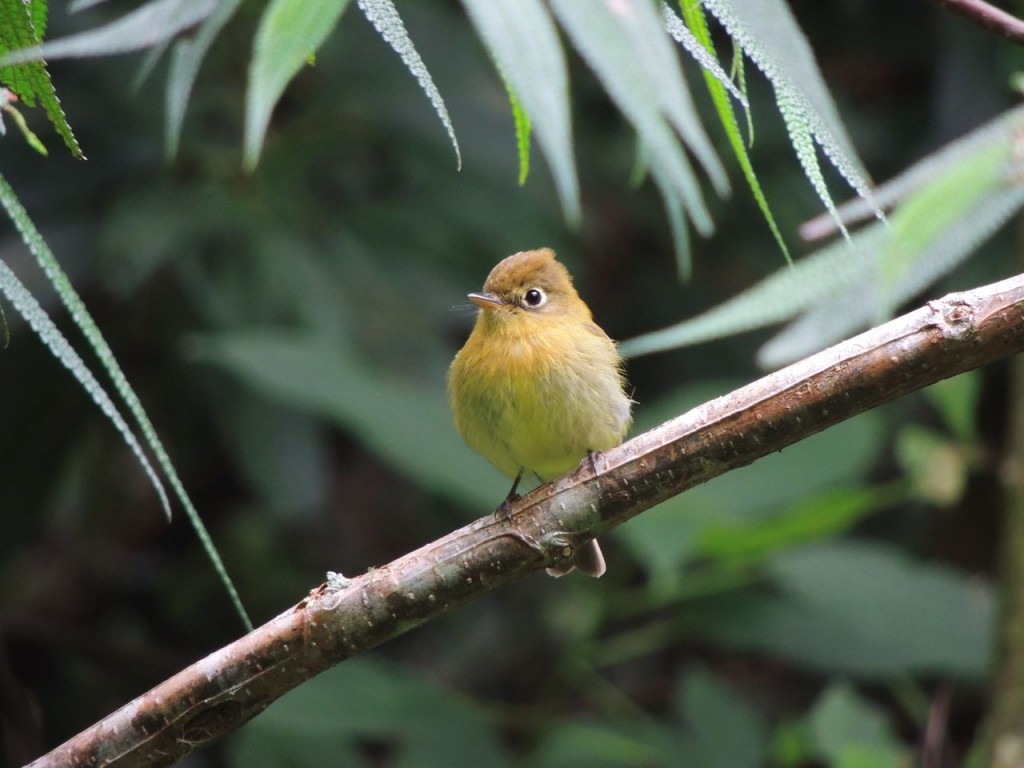
But back to flycatchers for the day’s best birds. I spent a long time watching a pair of Yellowish Flycatchers who seemed quite oblivious to my presence and later I watched a pretty, little, buffy-orange Tufted Flycatcher catching flies; well what else? The interesting thing about this bird was its habit of almost always returning to the very same spot after sallying out to grab a bite to eat; as if it were somehow tethered. Like the Yellowish Flycatchers, it was unconcerned by my approach, so obtaining a good photo was not difficult, I just steadied the camera, framed the shot, focused and waited for the bird to come back. Here it is, my bird of the day from a day that many might not celebrate for bird life, but which I reveled in for the whole experience of a tropical rain forest.
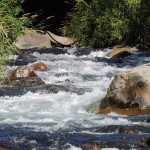
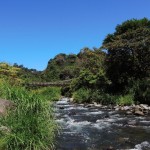
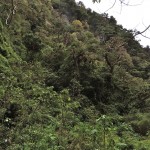
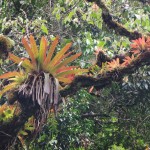
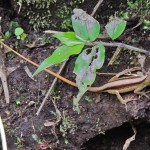
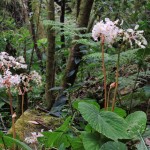
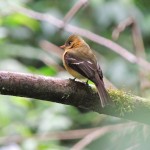
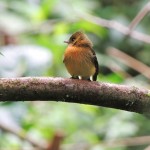
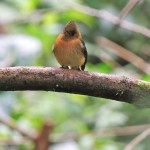
Sweet little birds!
My dream is to visit a rainforest and do photographic or biology work/studies. Or, just to go on an eco-type-tour in a rainforest!!!